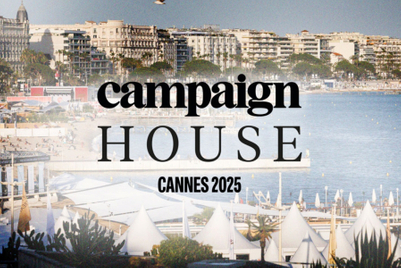
The study is the first of a potential series of four research papers investigating the same hypothesis, said Casbaa CEO Simon Twiston Davies in an interview with Campaign. The next paper, crafted in partnership with GroupM will be released in a few months, he added.
"Data is in constant need of updating and we're aiming to build a campaign around this piece of information. While it may seem like an obvious statement, the aim is to reprove it, test it and reaffirm its reality," explained Davies, adding that each media agency Casbaa worked with would apply its own proprietary method to investigating the statement.
In the study conducted by UM, a theoretical budget of US$1.75 million was used to "buy" spots on free-to-air and Pay-TV channels in Australia, India, Malaysia, Taiwan, the Philippines, Hong Kong and Singapore and analysed using data on the first quarter of 2011 from OZ Tam, Nielsen, TAM India, CSM, Kantar and UM.
The analysis found that in the seven markets measured, a 100 per cent allocation of the budget to FTA resulted in a campaign viewed by one third of the TV population, whereas a 50-50 budget allocation between free-to-air and Pay-TV saw total impressions multiply by 2.5. The report concluded that this method also lowered costs up to 60 per cent. These findings held true when the demographics data was analysed to reflect key age, gender and socio-economic groups.
"These findings apply solely to a pan-regional buy and not local campaigns," clarified Casbaa advertising consultant, Jane Buckthought. "If your target audience is only in one country it makes sense to spend the majority of your budget on terrestial TV," she said.
While there is a trend towards a higher budget allocation to multichannel TV, the Pay-TV broadcasters are still "not getting the sales they should", said Davies. "The markets where this is most apparant are Indonesia and even Singapore where there's a lot of work to be done, to inform the buying community that there is more to life than Mediacorp."
"The truth is Pay-TV remains a relatively hard sell for a lot of clients," said M&C Saatchi Asia CEO Chris Jaques. "The reality is, the easiest solution to everything is to advertise viafree-to-air - it's mass and there's easy access to data which proves to clients and bosses that you're not doing anything wrong."
Despite Pay-TV's strong performance in Asia, it still isn't carving out a fair share of the ad spend, continued Jaques. "When advertising on Pay-TV, you tend to get more upmarket audiences who are digitally inclined and younger, so you have to clarify that these are additional niche audiences you can't live without. Then there's how you can engage, relate and acess data about this additional reach - it's proving a problem to sell."
Casbaa's push to prove and reprove the effectiveness of Pay-TV advertising is therefore, understandable, concluded Jaques.
"The truth is, Pay-TV does have huge potential for incremental reach - depending on the segment targeted and it can play an important role in the TV mix. The true competition for Pay-TV is notfree-to-air but actually digital mediums. But initially, their growth will come from fere-to-air," commented president of IPG Mediabrands - World Markets, Prashant Kumar.
"For targeted segments, Pay-TV allows for higher choice, which in turns gains attention, relavance and engagement with the viewer — which makes it worth a premium," he said.
To support this research-driven campaign, Casbaa will be holding a series of TV Upfront Screenings across Asia-Pacific this year, similar to the one held last year in Singapore. On Feb 21, the association will be holding a screening for seven or eight networks in Hong Kong's IFC Cinema. Next on the agenda is Bangkok and, tentatively, Manila.



.jpg&h=334&w=500&q=100&v=20250320&c=1)

.jpg&h=334&w=500&q=100&v=20250320&c=1)
.jpg&h=334&w=500&q=100&v=20250320&c=1)
.jpeg&h=334&w=500&q=100&v=20250320&c=1)

.jpg&h=334&w=500&q=100&v=20250320&c=1)
.jpg&h=334&w=500&q=100&v=20250320&c=1)





.jpg&h=268&w=401&q=100&v=20250320&c=1)

.jpg&h=268&w=401&q=100&v=20250320&c=1)
